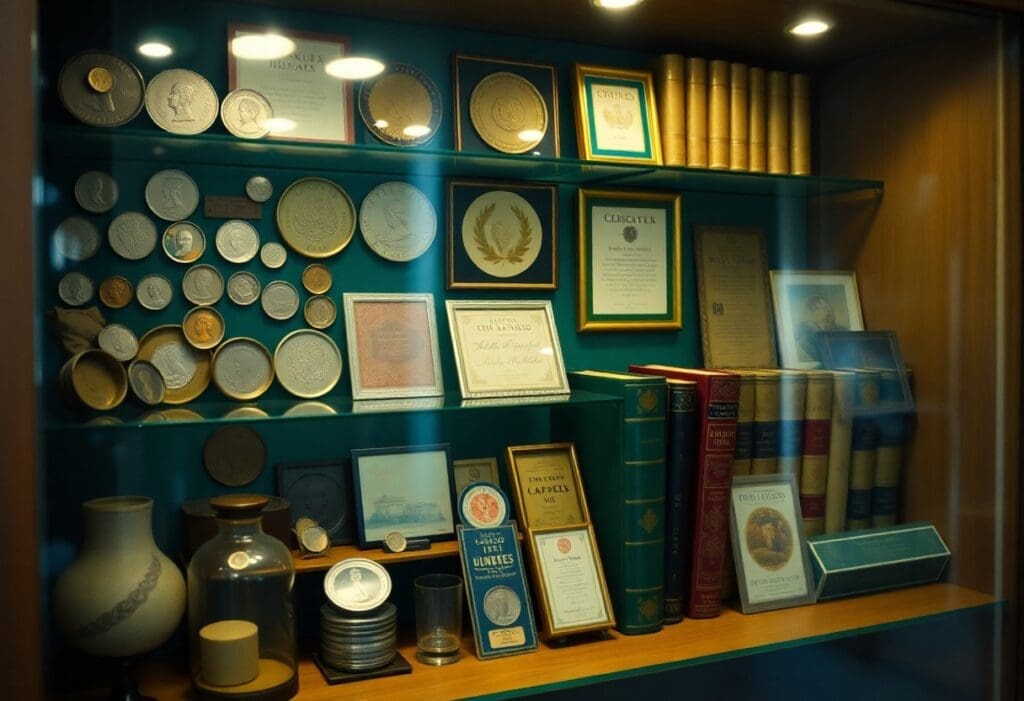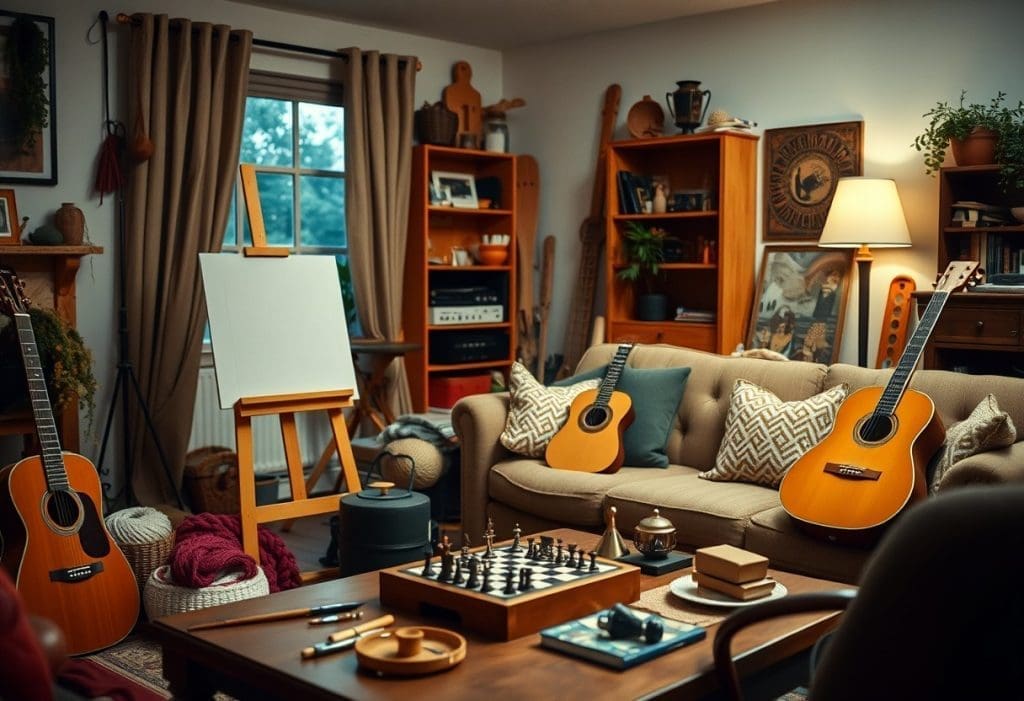There’s a unique thrill in collecting items that connect you to history, culture, or personal memories.
You can build a valuable collection of coins, stamps, or vintage toys with the right approach.
This guide offers practical tips for finding rare pieces, authenticating them, and preserving their condition.
Follow these insights to enhance your collection strategically. That way, you can start curating today and embrace the joy of collecting.
Types of Collectibles
The world of collectibles is diverse, with a rather wide range of categories that appeal to different interests.
Each type offers unique opportunities for finding, authenticating, and preserving valuable items.
Here are some main types to consider:
| Type of Collectible | Description |
|---|---|
| Coins and Currency | Tangible forms of money with historical or artistic significance |
| Stamps | Small pieces of glue paper that hold collecting value based on rarity and condition |
| Vintage Toys | Childhood favorites that capture nostalgia and growing trends in toy design |
| Art and Antiques | Items that showcase artistry from past eras with high aesthetic or historical value |
| Memorabilia | Objects that are connected to significant cultural moments or personalities, like sports |
Coins and Currency
Coins and currency can be fascinating to collect.
You might focus on historical pieces, rare coins, or modern collectibles.
By putting time into researching the minting details and historical context, you will make your collection more meaningful to you and others.
Stamps
Stamp collecting offers a glimpse into history and art.
Each stamp tells a story, reflecting events, culture, and design from different time periods.
You can explore various themes, including countries, historical events, or even famous personalities.
Unique features such as limited editions, printing errors, and historical context increase a stamp’s value.
Check condition and rarity, as these factors should heavily influence your acquisition strategy.
Vintage Toys and Games
Vintage toys and games excite many collectors. Items from your childhood can spark nostalgia.
Focus on brand names, rarity, and packaging condition. These are factors that will enhance your collection’s appeal.
Vintage toys have a unique charm that evokes childhood memories.
Brands like Lego, Barbie, and Hot Wheels often gain value over time.
Keep the original box and ensure items are in good condition. If you’re thorough and diligent, this can significantly boost their worth.
Art and Antiques
To fully understand art and antiques, you’ll have to develop an appreciation for craftsmanship and history.
Many collectors target pieces from different era styles. This enables them to create a personal narrative in their collections.
With art and antiques, knowledge is key. By studying artists, styles, and historical significance, you’ll be able to make more informed choices.
Authenticity can greatly affect value, so consider seeking expert evaluations of items you purchase.
Memorabilia
To many, memorabilia connects them to significant cultural events and personalities.
Items can range from sports jerseys to movie props, each holding unique stories behind them.
Collectibles tied to meaningful events or influential figures often carry higher value.
Your passion for a particular area will guide your memorabilia search, whether it’s music, sports, or film.
Look for authenticity certificates, which can serve a key role ensuring that you invest wisely.
Tips for Starting Your Collection
If you’re ready to jump into the exciting world of collecting, there are a few foundational steps you’ll want to take.
Start by understanding what you truly enjoy and what drives your passion.
Building a collection is not just about value; it’s about appreciation. Here are some tips to help you get started:
- Identify your interests and passions
- Do thorough research on your chosen items
- Set a realistic budget for your collecting journey
- Create a detailed collection plan
- Network with other collectors for insights and opportunities
This process can lead you to a meaningful collection you will cherish.
Research Your Interests
For effective collecting, it’s important that you explore various types of items that intrigue you.
Consider specific categories like vintage toys, stamps, or coins.
Read books, follow blogs, or join forums related to your interests.
The more you understand your chosen niche, the better you can decide what to collect.
Set a Budget
Little things can add up quickly in the world of collecting. You need a budget that reflects your financial situation while also allowing for growth.
This budget should account for both the items you want to buy and the costs associated with preservation and storage.
For instance, if you’re collecting coins, set aside a portion for purchasing coins, and another for supplies like storage and cleaning tools.
This balanced approach prevents overspending and keeps your collection thriving.
Create a Collection Plan
Once you have a focus and budget in place, start planning your attack!
First of all, you’ll want to outline the goals for your collection.
Decide how you want to acquire items—through auctions, secondhand shops, or online marketplaces.
Set specific milestones so you can track your progress and stay focused.
For example, aim to purchase a particular item each month or build toward a themed display this year.
Planning streamlines your efforts and makes the process enjoyable.
Network with Other Collectors
You can learn a lot, and much faster, by connecting with fellow collectors. Start by looking for local groups, online forums, or social media communities.
Experienced collectors can provide valuable resources and knowledge that you might struggle to uncover on your own.
Their tips and tricks can guide your purchasing decisions and help you identify authentic items.
Consider attending collector shows or expos where you can meet others and exchange ideas face-to-face.
With a solid network, you’ll enhance your collecting experience and almost certainly find unique items you would have missed without it.
Step-by-Step Guide to Curating Your Collection
Keep your collection focused and refined with a strategic approach.
Here’s a simple outline to help you curate valuable items effectively.
| Step | Description |
|---|---|
| Establish Rarity and Value | Research each item to understand its market value and rarity. |
| Sourcing Authentic Items | Find reliable avenues for purchasing genuine collectibles. |
| Evaluating Condition and Quality | Check the state of your items to maintain their value. |
| Organizing and Displaying Your Collection | Arrange your items for easy access and enjoyment. |
Establishing Rarity and Value
If you want your collection to appreciate over time, focus on rarity and value. Investigate how many of each item exist and their selling history.
Knowing this will help you understand what you should be seeking and what to take a pass on.
Sourcing Authentic Items
Look for reputable dealers, attend auctions, and explore online marketplaces that prioritize integrity.
Items often come with different levels of authenticity.
As a rule of thumb, always request certificates of authenticity whenever possible.
Collector clubs or forums are also excellent venues to find trustworthy advice and leads on reputable sources.
The shared experiences of others can guide you toward solid purchases.
Evaluating Condition and Quality
If you want to keep your collection valuable, pay close attention to the condition and quality of each item.
Visual inspection can reveal a lot, and minor flaws can significantly affect value.
This evaluation isn’t just about appearance. It includes understanding how to preserve each piece.
For instance, some items (e.g. comic books or vinyl records) might require special storage conditions to prevent damage.
By sure you know exactly what handling and cleaning steps you’ll need to minimize wear over time.
Otherwise, you could acquire an amazing item only to have it fall apart after years of storage.
Organizing and Displaying Your Collection
There’s a fun side to collecting: organizing and displaying your treasures.
A well-organized collection can enhance enjoyment and appreciation of your items.
Collection organization can be as simple as categorizing by type or era.
Use storage solutions that provide visibility without risking damage.
Display cases add elegance and allow you to showcase your passion while protecting your items.
Enjoy the art of sharing your collection with friends and fellow enthusiasts.
Factors Influencing Collectible Value
Not every collectible holds the same worth. Various factors can influence how much your items are valued.
Here are some key elements to consider:
- Market Demand
- Historical Significance
- Provenance and Authenticity
- Condition Grading
The value of your collectible often depends on how many people want it.
When an item gains popularity, prices can surge.
Track sales trends to understand what collectors are currently interested in.
Historical Significance
If an item is tied to notable events or figures, its value can increase.
Collectibles that tell a story or represent a significant moment often attract collectors willing to pay more.
For instance, vintage toys from the early 20th century can be incredibly valuable because they represent a specific time in history.
As another example, a bat or ball used by someone like Babe Ruth or Ty Cobb to hit a walk off homerun would be very valuable to baseball enthusiasts.
Collector interest can rise especially for items linked to iconic brands or promotions that shaped the industry.
Provenance and Authenticity
With collectibles, you’ll be able to boost value by proving that an item is genuine and detailing its history.
Clear documentation or expert appraisal can add credibility to your collection.
This means having records like original receipts, past ownership details, and expert evaluations.
Such proof can greatly increase buyer confidence, often leading to higher sale prices for your items.
Condition Grading
Assuming you keep your collectibles in good shape, you’ll see better sales value when you eventually opt to liquidate those items.
Items graded as “mint” or “near mint” can fetch much more than those showing significant wear.
By keeping items in their original condition, you’ll not only preserve their value but also make them more desirable in the collectors’ market.
Pros and Cons of Collecting
After weighing your passion for collecting, it’s important to understand both the positives and negatives that come with it.
This awareness will help you navigate your journey more effectively.
Below, you will find a clear breakdown of the advantages and disadvantages of collecting.
Pros and Cons Summary
| Pros | Cons |
|---|---|
| Can be a rewarding hobby | Can be time-consuming |
| Potential for investment growth | Market fluctuations affect value |
| Connects you with like-minded people | Risk of counterfeit items |
| Enhances knowledge and skills | Requires ongoing research |
| Offers personal satisfaction | Space and storage issues |
Advantages of Collecting
On one hand, collecting can offer you a rewarding pursuit.
You gain enjoyment from finding rare items, expanding your knowledge, and connecting with fellow enthusiasts.
This hobby also opens up investment opportunities.
The right coins, stamps, or vintage toys can appreciate in value over time, leading to potential financial growth.
If you network effectively, you’ll connect with likeminded people and grow your group of trusted contacts and friends.
And the intangibles cannot be ignored.
You can learn, build skills, and overall, develop a sense of pride and satisfaction with your newfound capabilities and outstanding collection of whatever you choose to pursue.
Potential Downsides
Let’s be honest; collecting anything will require an investment of time and effort, in addition to money.
If you lead a very busy life, collecting may just add another stressful “to do” on your list of other actions. And why do it if it isn’t fun?
You should also be aware that market fluctuations can greatly affect the value of your collection.
You’ll need resilience to stick it out of values go up and down. If you love what you are collecting, the financial side will be less of a worry over time.
And you should be aware that you might encounter counterfeit items, which can lead to costly mistakes.
Storage is another “gotchya” that I must point out. As your collection grows, do you have enough space to dedicate to it?
I’m not trying to scare you off of this hobby altogether. But you’ll be happy to know all of this in advance, so you won’t be deflated if and when these cons happen.
Preservation and Maintenance
To maintain the value of your collectibles, you’ll need to be good at proper preservation and maintenance.
This includes carefully storing your items, cleaning them safely, and knowing the right insurance options to protect your investment.
Storing Your Collection
Keep your collectibles in a controlled environment, away from direct sunlight and humidity.
Use padded boxes for fragile items like coins and stamps.
For vintage toys, consider display cases that shield them from dust while allowing you to show off your collection.
Cleaning and Restoration Techniques
On occasion, you may need to clean your collectibles to maintain their appearance.
Use gentle methods suitable for each type of item.
For instance, use a soft cloth for coins and stamps, while vintage toys may require specialized cleaners.
It is important to store and clean your collectibles properly to prevent damage.
Use microfiber cloths to gently wipe away dust without scratching surfaces. Avoid harsh chemicals that can erase value.
Restoration is tricky. Always consult an expert if you’re unsure of how to do it yourself.
They can guide you on the best processes that won’t harm your items.
Insurance and Valuation
If your collection grows in value, consider insurance. You want to protect your investments from theft or damage.
Many collectors overlook this, which can be a costly mistake.
The value of your collection might surprise you. Get a professional appraisal to know exactly what you have.
Some insurers require appraisals for coverage, so it’s smart to have these documents ready in advance.
Regularly update your insurance policy to reflect any new acquisitions or changes in value. For maximum protection, keep updated records over time.
To wrap up
Collecting can be a rewarding journey when you focus on the right items and approaches.
Always research the market to understand what makes your collectibles valuable.
Authenticate your pieces to ensure that you invest wisely. And maintain that value over time by adopting the very best preservation techniques
You can build a collection that reflects your interests and grows in value. Enjoy the process and share your passion with others. Happy collecting!



